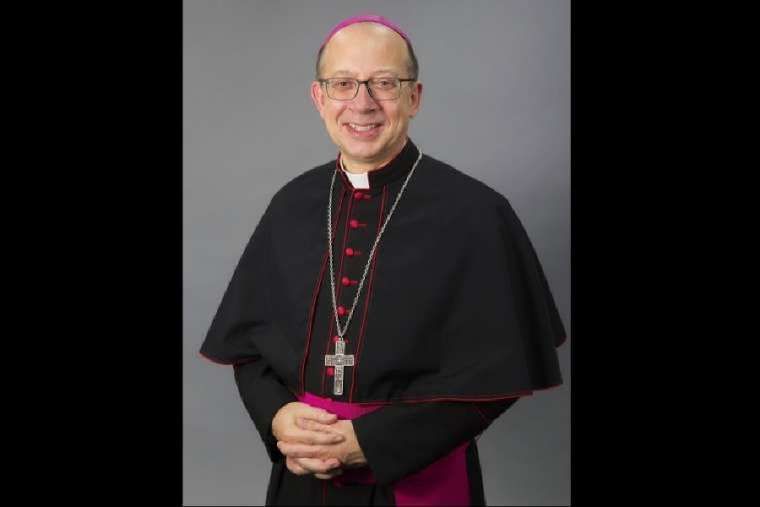Nicaragua’s dictatorship renames university, evicts 6 Jesuits from adjacent property
 (Left) A stamp printed in Nicaragua shows the face of Casimiro Sotelo Montenegro. (right) Letters from the Central American University. / Credit: Lefteris Papaoulakis/Shutterstock and Jesuits Central America
(Left) A stamp printed in Nicaragua shows the face of Casimiro Sotelo Montenegro. (right) Letters from the Central American University. / Credit: Lefteris Papaoulakis/Shutterstock and Jesuits Central America ACI Prensa Staff, Aug 22, 2023 / 11:30 am (CNA).
Losing little time after expropriating the Jesuit Central American University (UCA) on Aug. 15 and changing its name Aug. 17, the dictatorship of President Daniel Ortega in Nicaragua sent police and prosecutors on Aug. 19 to evict six Jesuits living in an adjacent residence despite the fact that it belongs to the Jesuit order, not the UCA.
The Jesuits showed the officers proof of the order’s ownership but it made little difference and they were ordered to leave. They left without incident, taking with them a few personal items. They are now staying at the St. Ignatius Community in Managua.
In a statement posted Aug. 19 on Facebook, the Central American Province of the Society of Jesus stated: “We strongly condemn this act of violence against our community and we reaffirm our confidence that the Lord of History will continue to protect the Jesuits of Nicaragua during this difficult period.”
The Conference of Jesuit Provincials of Latin America and the Caribbean charged in a statement posted Aug. 19 on X that “this is one more act in a spectacle where truth, justice, and respect for the inalienable rights of human beings face measures that seek to silence the voices that rise up and support the struggle for a country where the rights of all are respected, their integrity and their search to live freely in their own country.”
The name change
Two days before the eviction, the National Council of Universities decided to cancel the authorization to operate the Catholic university and approved the creation of the new national university, naming new regents.
In videos posted on social media the night of Aug. 17, several men can be seen removing the letters that spelled out “Central American University” on the façade of what was considered the most important private university in the country.
The university’s name has now been changed to “Casimiro Sotelo Montenegro National University” in honor of the Sandinista student leader assassinated in 1967 by the Somoza regime.
In addition, a photograph shows the flag of the Sandinista National Liberation Front (FSLN) being hoisted inside the university facilities.
The FSLN is the leftist political party of Daniel Ortega, the country’s president and a former guerilla fighter.
Arturo McFields Yescas, former Nicaraguan ambassador to the Organization of American States, now in political exile for denouncing the arbitrary acts of the regime, said he considers what is being done “deplorable.”
“Changing the name of what you steal, like when a criminal steals a car, paints it, and changes the license plate, is promoting anti-values. That is what is being promoted in this new repressive stage of the dictatorship,” McFields said in an Aug. 18 interview with ACI Prensa, CNA’s Spanish-language news partner.
Who was Casimiro Sotelo Montenegro?
Sotelo was a student leader at the now former Central American University, from which he was expelled on July 23, 1966, for his partisan activities. He was also a member of the national leadership of the FSLN, a leftist guerrilla group that on July 19, 1979, overthrew the Somoza dictatorship headed by President Anastasio Somoza Debayle.
Biographer Kennett Morris wrote in his book “Unfinished Revolution: Daniel Ortega and Nicaragua’s Struggle for Liberation” that Ortega “was not very diligent in his studies” and “his main role at the university was to support his friend and fellow student, Casimiro Sotelo, to create an FSLN cell within it.”
Despite having joined the FSLN in 1963, Ortega still did not have a prominent position in the ranks of the guerrilla movement. At that time, he was simply one of the members, unlike Sotelo, who already held positions in student activism efforts.
In 1967, Sotelo was part of a student delegation that traveled to Cuba to participate in the conferences of the Latin American Solidarity Organization, the Nicaraguan newspaper El Confidencial reported.
“There are people who look upon Sotelo with a feeling of romanticism, like a young man who dreamed of a free Nicaragua. But there is a fundamental difference between the young people who today dream of a free Nicaragua and Sotelo, because he is part of a generation that believed weapons were the only way to bring about change in Nicaragua,” McFields told ACI Prensa.
According to McFields, also a former UCA student, the Sandinista leader was “a young student who believed in violent change in Nicaragua, after having been trained in Cuba with the ideas of the Cuban dictatorship.”
“He believed in the principles and anti-values of the Cuban dictatorship, with more than 64 years in power during which more than 360 Catholic schools were confiscated, the Catholic university of St. Thomas of Villanueva was closed, and which relentlessly persecuted and imprisoned priests,” he continued.
On Nov. 4, 1967, Sotelo was captured in the Monseñor Lezcano neighborhood in Managua along with three other activists. He was later killed by a colonel of the Somocista guard.
McFields considers the name of Sotelo to “not represent the principles and values of St. Ignatius of Loyola, which were to love and serve.”
“This young man was not a hero; he was expelled from the UCA and he was a friend of Daniel Ortega; he shared his ideas. He was a young man who wanted a Nicaragua free from the Somoza dictatorship through death and violence,” he said.
The expropriation of all the assets of the UCA, founded in 1960 by the Jesuits, has been both nationally and internationally censured.
The closure of the university has left more than 9,500 students without access to education. Since the anti-government protests of 2018, the expropriation is the latest act of harassment and repression suffered by the Church, which has also affected other Catholic institutions and political dissidents.
This story was first published by ACI Prensa, CNA’s Spanish-language news partner. It has been translated and adapted by CNA.





